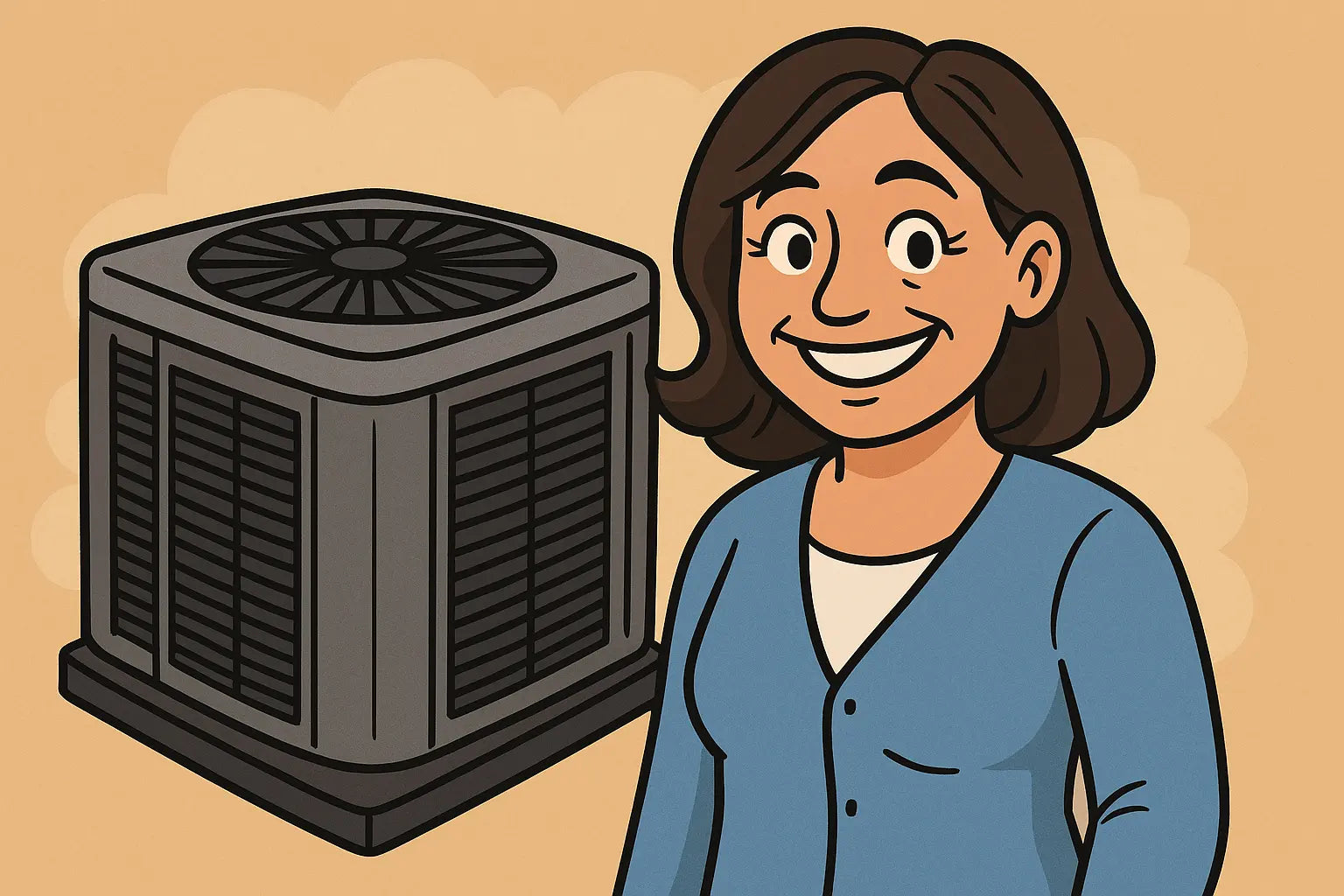Hey There, it’s Samantha Again 👋
We’ve all been there—you glance at your Amana PTAC unit, and BAM, there’s a blinking display or a strange code staring back at you. Cue the anxiety, right?
Well, breathe easy. Today, we’re breaking down what those error codes actually mean and what you can do to fix them fast (without sweating it out or freezing while you wait for help).
Let’s be real: your Amana Distinctions 12,000 BTU PTAC with 3.5kW Electric Heat is a rockstar when it’s running right—but like any smart machine, it has ways of signaling when something’s off. Let’s learn its language, shall we?
1. Why Amana PTACs Flash Error Codes 🧠
Your PTAC is kind of like a mini HVAC brain. When something’s wrong, instead of just shutting down, it gives you a coded message. These error codes help you pinpoint the issue without needing to dismantle the unit or guess.
Most codes show up either on the LED diagnostic display (on newer models) or via blinking status lights. Think of it like Morse code… but for indoor comfort.
2. The Most Common Amana PTAC Error Codes (And What They Mean) 🚨
Here’s a cheat sheet of the most frequent error codes and what’s likely going on:
| Code | What It Means | Fix It Like This |
|---|---|---|
| F1 | Indoor air sensor fault | Make sure the sensor is connected and clean. Replace if damaged. |
| F2 | Outdoor air sensor fault | Check placement or wiring of the outdoor sensor. |
| F3 | Coil sensor fault | Sensor might be loose or faulty—tighten or replace. |
| F4 | Frost protection mode | Unit is preventing freezing. Let it run to thaw, then inspect airflow. |
| F5 | Return air sensor fault | Usually a connection issue—check wires or order a new sensor. |
| F6 | Freeze protection active | This happens when temps dip too low—ensure unit isn’t obstructed. |
| LC | Low voltage detected | Inspect circuit, breaker, or transformer for power issues. |
| HP | High-pressure fault | Clean the coils and make sure airflow isn’t restricted. |
| LO | Low-temperature lockout | Outside temps may be too low for heat pump mode. Switch to electric. |
| HI | High-temperature lockout | Check for dirty filters or blocked return airflow. |
If you’re ever unsure, you can always peek at the official Amana tech manual or visit PTAC error code references like this one from PTAC Units for a deeper dive.
3. Diagnosing the Cause: 3 Steps Before You Panic 🧯
Before you start replacing parts or calling in the cavalry, try this sequence:
Step 1: Power Cycle It 🔄
Just like your Wi-Fi router, sometimes all your PTAC needs is a quick reboot. Turn it off at the control panel or unplug it for 5 minutes.
Step 2: Check Your Filters 🧼
Clogged filters can cause airflow issues, which confuse sensors and trigger codes. A dirty filter is one of the most common root causes of error messages.
Step 3: Test Room Voltage ⚡
Amana PTACs can throw codes when the voltage drops below safe levels. If you’re using an extension cord (please don’t 🙅) or have other heavy loads on the same circuit, this could be the problem.
You can check your outlet voltage with a simple voltage tester like this one from Lowe's.
4. When to Call an HVAC Pro 📞
Some codes (especially F1, F2, and HP) may require component-level replacement. If you’re not comfortable opening up the PTAC housing or handling wiring, call a licensed tech.
Here’s a great breakdown on when to call an HVAC technician from Happy Hiller.
But for basic troubleshooting like checking filters, airflow, and loose wiring? You’ve totally got this 💁.
5. Bonus Tip: Keep a Mini Maintenance Log 📝
This one’s underrated but golden: keep a notebook or note app log of when error codes pop up, along with what fixed them. Over time, you’ll notice patterns—maybe you need to clean filters every 45 days instead of 90, or that your voltage dips when the microwave and PTAC run together.
It’s also super helpful if you ever rent out the space or bring in a tech—they’ll love you for it!
6. Preventing Future Error Code Mayhem 🛡️
Want to avoid these headaches in the first place? Try:
-
Cleaning filters monthly
-
Keeping vents and coils clear of debris
-
Checking for signs of moisture or leaks (especially near the drain pan!)
-
Running your PTAC on “Auto” mode instead of full blast all the time
Also, make sure your PTAC is installed properly and sealed against the wall. Poor sealing leads to temperature inconsistencies, which can throw off sensors and trigger codes.
This PTAC installation guide by Total Home Supply is super helpful if you’re unsure your unit’s mounted correctly.
Final Thoughts from Samantha (and Your New Favorite Cheat Sheet) 💁
Error codes are like little love notes from your PTAC… confusing, yes, but helpful if you know how to read them.
And if you’re still shopping or thinking of upgrading, my personal favorite—the Amana Distinctions 12,000 BTU PTAC with 3.5kW Electric Heat—is a champ when it comes to diagnostic clarity and self-protection features. It’s the kind of unit that talks back—but in a good way 😉.
Curious about how to keep the parts of this unit clean? Visit my guide: Amana PTAC Filters & Coils.
So next time your Amana PTAC blinks a code at you, don’t panic—just grab this guide, sip your coffee ☕, and tackle it like the HVAC boss you are.
Stay cool (or warm),
—Samantha, Home Comfort Advisor







